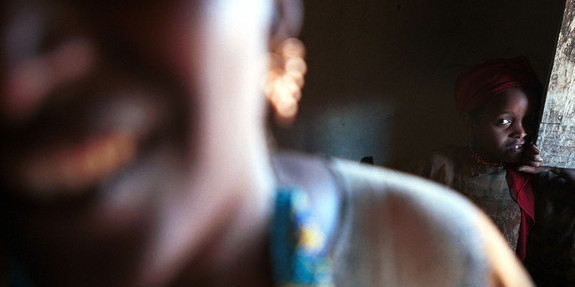Anti-FGM (Female-Genital-Mutilation) campaigners in the West use shock tactics (often pictures of screaming and bleeding girls, held down by ‘cutters’) to canvass support. True, the practice in the pictures is horrific. But sometimes the ‘do-gooders’ don’t accept that the wrong they are fighting is close to being righted. In Somalia, for example, -historically one of the worst ‘FGM’ countries-, the old practice has been replaced in 75 % of cases by much more benign clitoral hood removal, comparable to circumcision in boys. Remarkably, campaigners are hushing up this victory of Somalis themselves.
One morning, on my Facebook page, there she was: Ayaan Hirsi Ali, of all people, saying that the ‘incision’ in modern female circumcision in her country Somalia, was “not as bad” as the male circumcision carried out on boys in Jewish and Muslim communities all over the world. Not even as bad as that.
With apologies to Dutch documentary maker Michael Schaap, for taking his film about male circumcision (made in 2005- this was a re-post) out of context, this was a revelation to me. The fiercely pro-women and anti-Islamist Ayaan Hirsi Ali can, after all, not be accused of any tolerance for women-unfriendly traditions.
Of course Hirsi Ali was not referring to the old, barbaric FGM, whereby outer labia and clitoris are cut off and the vagina sewed shut with only a small opening left for urine. She was talking about new, less invasive forms of FGM, like the sunnah cut (whereby only the clitoral hood is removed); and the ‘incision’, where the hood is merely pierced.
No less an authority than Unicef confirmed, eight years later, in a 2013 report that of ‘old’ FGM in Somalia was gradually disappearing. Seventy-five percent of Somali* girls were no longer victims of this, the report said. The fate was still, terribly so, awaiting around 25 % of girls, mostly in the very rural areas, but still: to go down from 98-100% to 25% was certainly a great victory. Sheema Sen Gupta, head of Unicef’s child protection office in Somalia, had said she was ‘absolutely thrilled’.
A subsequent ZAM investigation by Somali correspondent Muno Gedi and the Nugal Female Journalists Club in Garowe, Puntland, showed that health information on the radio and in clinics, had caused many to drop the old practice. People wanted their daughters to be reputable; they didn’t want them to go septic and die. Secondly, there were the imams, a majority of whom had joined government and activist campaigns against the practice. They had used their mosques to explain that the Koran does not prescribe the ‘cut’. This had given many a young woman, already often opposed to the practice, the support she needed. From the mosques, the debate had started buzzing in the streets, markets and within families.
Interestingly, ZAM found that an important role had been played by younger Somali men. “They don’t want a cut wife anymore’, respondents told our reporters. This had removed the last foundations under the ‘marriageability’ argument traditionally used by the elder aunties and grannies. More and more young mothers were now, when it came to their baby girls, either opting for ‘sunnah’, or ‘incision’, or were not having anything done to them at all. “I expect this whole thing to be over in six, seven years”, said one respondent.
And then the report was buried. I had wanted to follow up on it and phoned Unicef in Somalia a number of times. I was told they knew nothing of such a report. No, Sheema sen Gupta wasn’t there. Another Unicef report, published in July that year, didn’t mention the previous one. It merely concluded that FGM everywhere was still very bad and that the campaigns against ‘all forms of FGM’ must continue. In 194 pages, only one sentence seemed to refer to the previous, now strangely missing, report. “One in five girls in Somalia still undergoes infibulation.’
Unicef was not the only organisation refusing to acknowledge change brought about by Somalis themselves. Even the development section of the reputable Guardian in the UK didn’t want to hear about it. A representative, who had asked a ZAM journalist to do a story about FGM in Somalia had, when told that the story would be different from what she thought, simply gone home and never answered any follow-up calls.
Apparently, to certain do-gooders, change brought about by the very people they aim to help isn’t important. The second Unicef report denied the work of doctors, nurses, imams, government officials, women and men in any of the countries judged in it. The Guardian’s development section denied Somali women’s own agency. In doing so they, as a good old English saying would have it, add insult to injury.
Meanwhile, the avalanche of images (just type in ‘FGM pictures’ on Google) of screaming little girls with their legs held open continues unabated. Billions donated by suitably horrified individuals still produce more and more reports with such pictures, posted by organisations that thrive on victimhood and their role as rescuers.
*The report only covered northern Somalia since, at the time, the south and capital Mogadishu were riddled with armed conflict, but the researchers expressed ‘optimism’ that the developments around FGM would be similar there.


